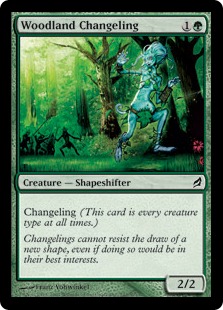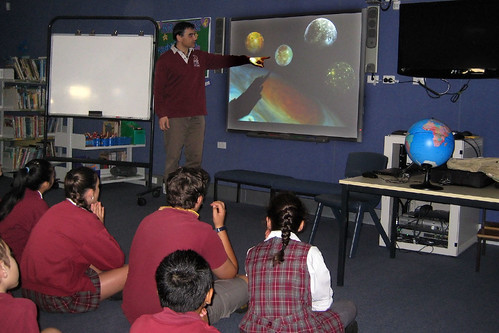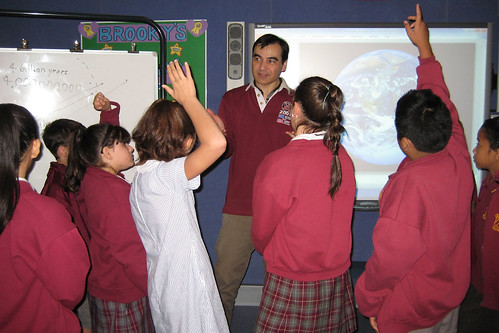So I was browsing through the Comprehensive Rules for Magic: The Gathering today (as one does). And I noticed this bit in rule 702.72, the rule on the Changeling ability:
702.72a Changeling is a characteristic-defining ability. “Changeling” means “This object is every creature type.” This ability works everywhere, even outside the game.
For those unfamiliar with the game, it’s a card game, with a bunch of cards that represent various fantastical creatures and magical spells and stuff. The creatures have associated with them one or more creature types, for example: goblin, or dragon, or human knight (2 creature types, it’s both a human and a knight). There is a canonical list of the all the different creature types defined in the game. Creatures can also have abilities on them, which do various game-mechanical things.
“Changeling” is an ability. As described by the rule 702.72a, a creature with the Changeling ability has all of the valid creature types in the game. So a creature card with “Changeling” printed on it in its ability box is actually a goblin and a dragon and a human and a knight, and all of the other 220 different creature types currently defined in the game. Well that’s fair enough, this is a fantasy game after all. A creature can be magical and be multiple things at once.
The interesting thing is the sentence in the rule that says: This ability works everywhere, even outside the game.
So, even if you’re not currently playing a game of Magic, and you have a Changeling card sitting in front of you, that card represents a creature that is a dragon and a goblin and a human… etc.
 If you accept this statement at face value, it has some interesting philosophical repercussions. What if you have no interest in Magic as a game, but you like dragons and are interested in collecting cards with pictures of dragons on them – Tarot cards, Yu-Gi-Oh! cards, Magic cards, whatever, as long as they have a picture of a dragon on them. You love dragon artwork.
If you accept this statement at face value, it has some interesting philosophical repercussions. What if you have no interest in Magic as a game, but you like dragons and are interested in collecting cards with pictures of dragons on them – Tarot cards, Yu-Gi-Oh! cards, Magic cards, whatever, as long as they have a picture of a dragon on them. You love dragon artwork.
Then, because of rule 702.72a and the fact that it applies even outside the game, you must want a copy of Woodland Changeling (shown at right). It sure doesn’t look like a piece of artwork depicting a dragon, but it is. You don’t get to say, “No, that’s not a dragon, I don’t want that card.” If you want to collect all cards with artwork of dragons on them, then you must want to collect this card.
Let’s push this even further. Imagine someone has a pathological desire to collect cards with artwork of dragons on them. They don’t play Magic, they have no interest whatsoever in it as a game, but they love the cards with dragons on them. Someone has a rare Changeling card, and they are found murdered in their study and the card stolen. The card collector is caught and put on trial. The entire prosecution case revolves around establishing motive. (Forget means and opportunity.)
Look, the prosecution argues, rule 702.72a clearly states that even outside the game, a Changeling card represents all creature types, and is therefore a dragon. Ergo, the card depicts artwork of a dragon! Motive established!
That’s ridiculous, opines the defence. You cannot seriously argue in a court of law that a game rule establishes the motive of my client to murder someone in order to gain a card for a game he is not even interested in, by establishing that the artwork on the card of a bipedal, wingless, humanoid creature is defined as being artwork depicting a dragon!
The prosecution calls an expert witness, Matt Tabak, Magic: The Gathering rules manager at Wizards of the Coast. He swears under oath that rule 702.72a defines a Changeling to be a dragon, and that this definition applies even outside the game of Magic.
A person’s fate rests on this!
Now, obviously this is an incredibly contrived discussion, but it was all brought about by pondering on the implications of making such a rule. Before anyone makes the point, I’ll acknowledge that the rule is written that way specifically to allow things like building decks of cards with which to play Magic – an activity that falls outside the playing of the game itself. For example, if you want to build a deck with 20 dragons in it, you are allowed to put in 18 actual regular dragons, and a couple of Changelings. That’s allowed, because of the rule.
The thing is, the way they did it has a much, much broader scope than needed for that, if read literally. I’m not really complaining about this, or suggesting that the rule needs to be changed – I’m just making an amusing extrapolation. (i.e. I don’t need people telling me “Get a grip, the rule is only intended to cover deck-building!” – I know that.)


